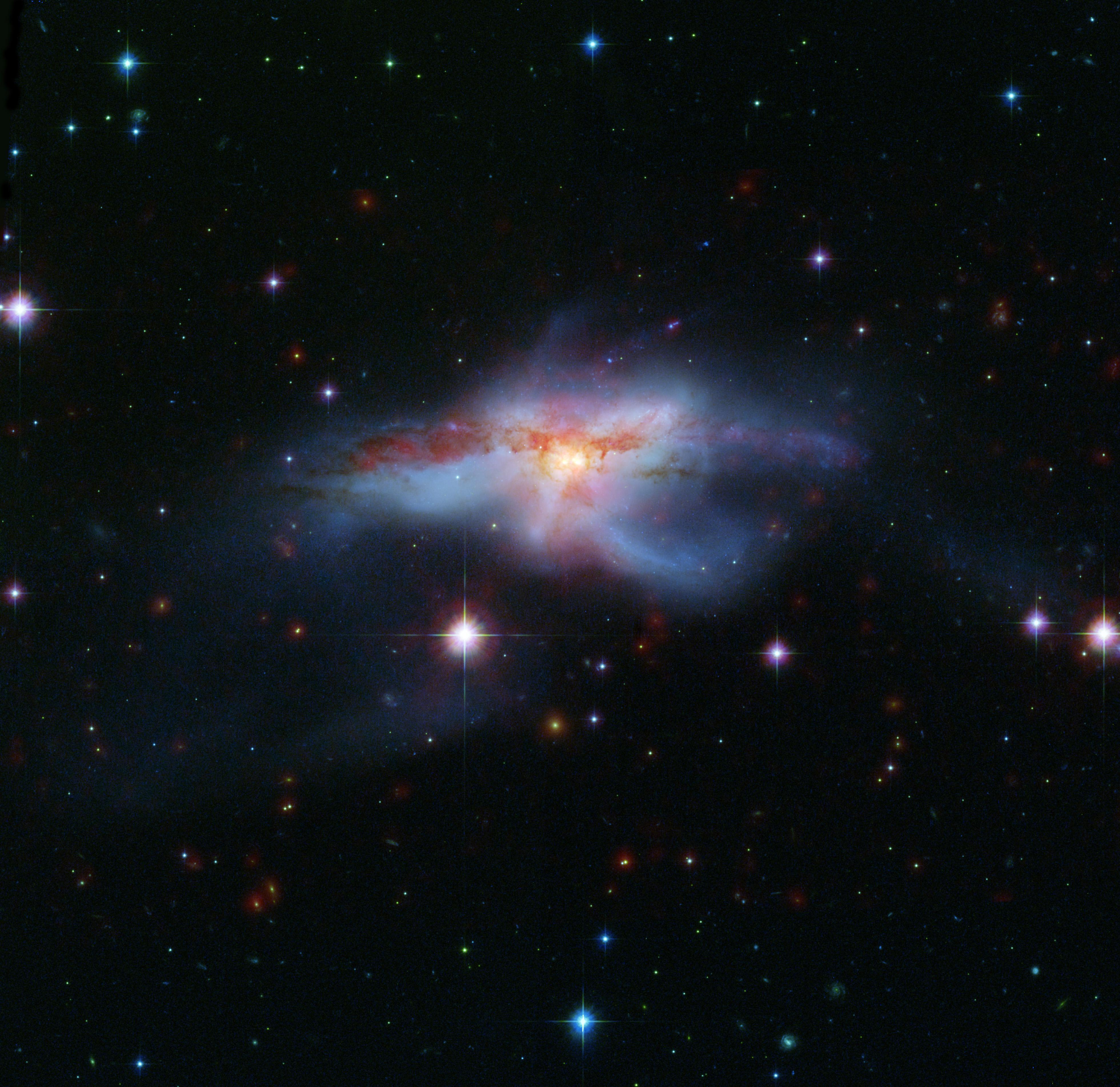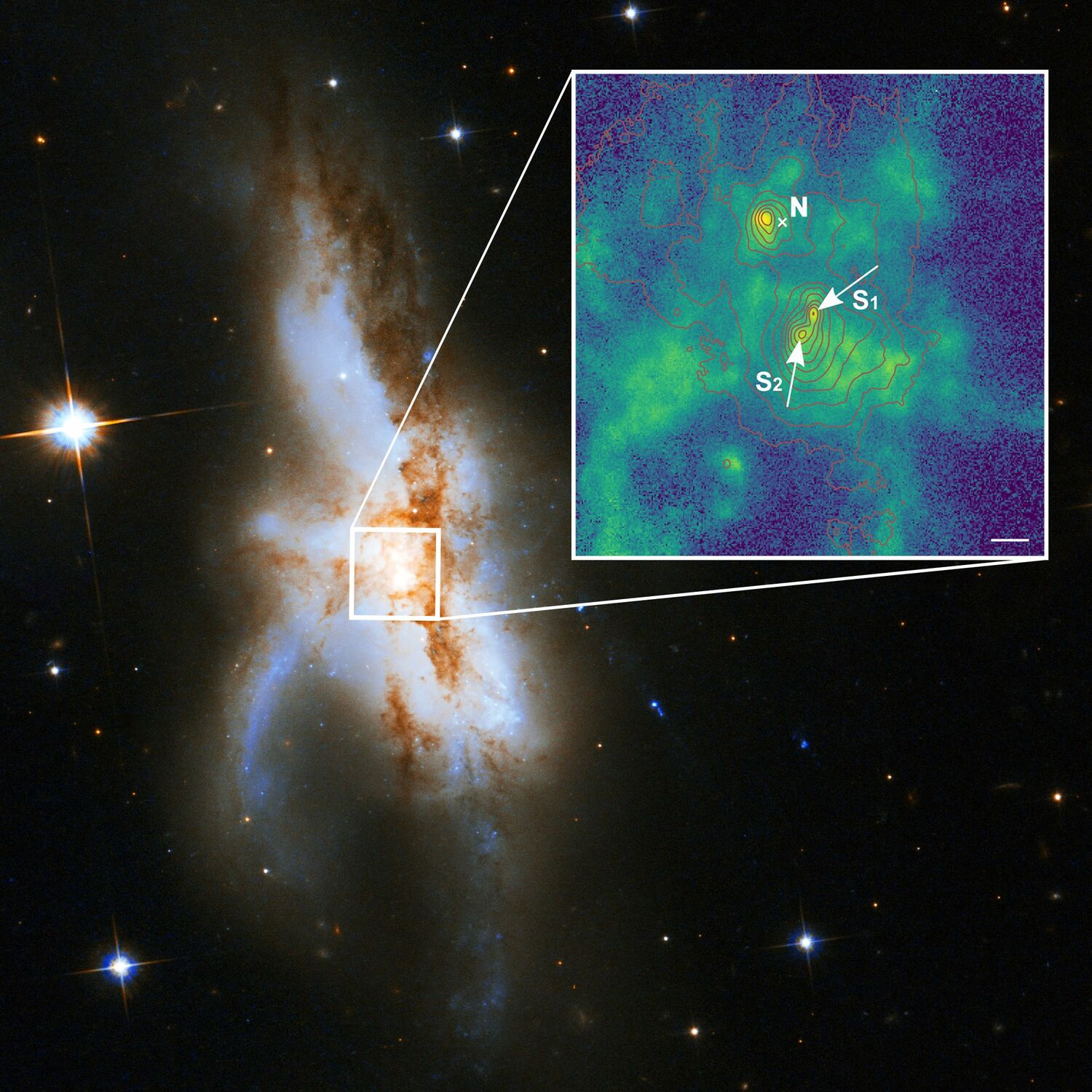Three giant black holes at the center of one galaxy
At the center of any galaxy that wants to be taken seriously, a mysterious giant is lurking – a supermassive black hole, often with a mass of millions to billions of solar masses. The center of our Milky Way has a gravitational monster, Sagittarius A*, which has sucked up the mass of more than four million stars the size of our Sun.
But in terms of the universe, that’s almost nothing. Astronomers have now identified three supermassive black holes in the irregular galaxy NGC 6240 as reported by the University of Göttingen. NGC 6240 is about 330 million light-years from the Solar System in the constellation Ophiuchus and has a diameter of about 300,000 light-years. Its irregular shape indicates that it was formed a relatively short time ago – perhaps only 30 million years ago – in a gigantic collision of galaxies.
Apparently not only two, but three galaxies merged. Their former centers, three giant black holes, are now located at the relatively small distance of 3000 light-years from each other. This is very convenient for astronomers: previously, it was thought that galaxies should have needed more time to reach their current state, but if more than two galaxies regularly collide at one time, this would naturally accelerate the rate of evolution sufficiently.
Astronomers are also looking forward to future gravitational wave measurements. The three giant black holes are already close enough that our descendants will certainly be able to detect a few powerful gravitational waves from the collisions expected in a few million years. Strictly speaking, the three objects probably already collided long ago – but the consequences of those collisions need at least 330 million years, due to the large distance, until we can detect them.


Love the ice moon series. Great science and a thought-provoking story line.
Thanks!